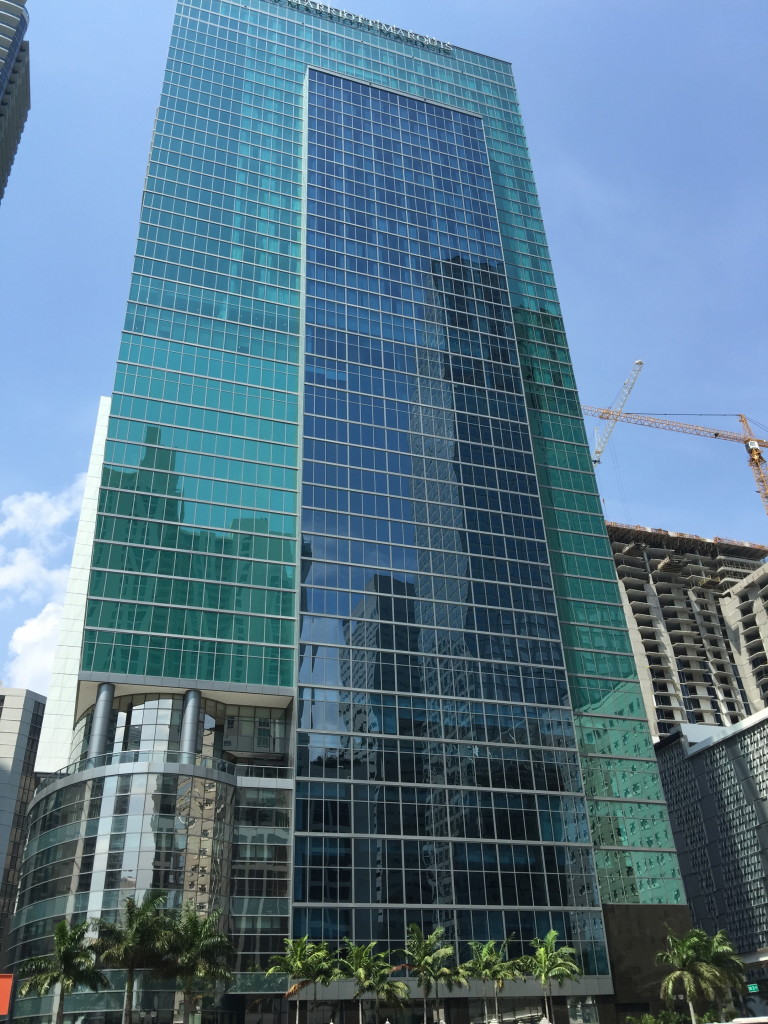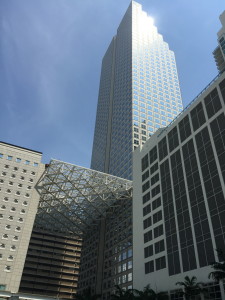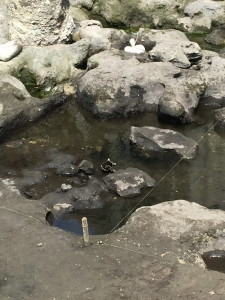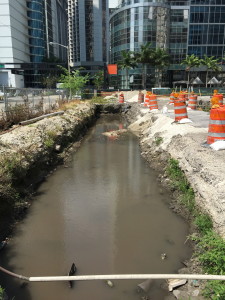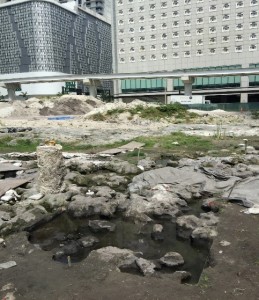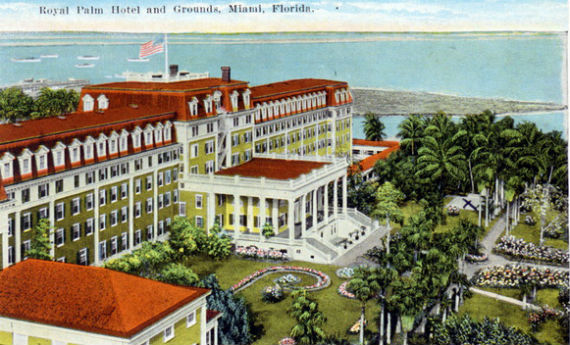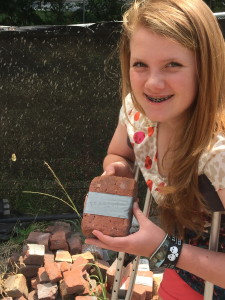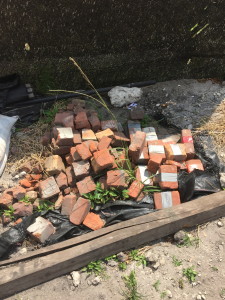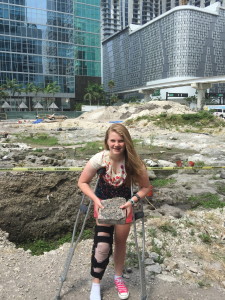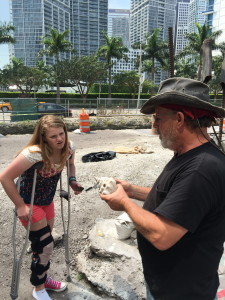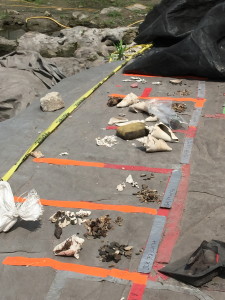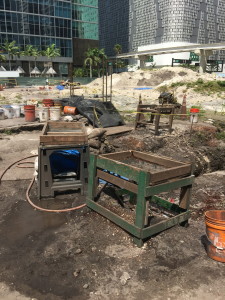Renowned Archaeologist Discovers Evidence of Rapid Sea Level Rise in Miami
Renowned Archaeologist Discovers Evidence of Rapid Sea Level Rise in Miami
Ancient Arrowheads, Coconut Palm Trees, Submerged Brick Patios & Henry Flagler Combine to Confirm Sea Level Rise in South Florida
To learn about the impact that sea level rise has already had in our community, much less what will take place in the future, you need only to learn a few things about the origin of the coconut palm tree, a long forgotten hotel’s patio and an iconic pioneering developer who is credited with building the foundation for, what is today, modern South Florida.
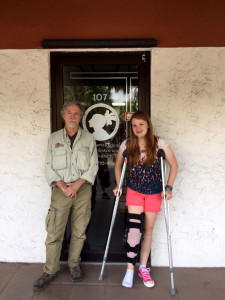 But first, it’s helpful to meet a real life Indiana Jones by spending some time with renowned South Florida archaeologist Robert Carr. I recently had the opportunity to visit Mr. Carr at his office and then traveled to one of his ‘digs’ in downtown Miami. My day (and his amazing work) confirms to me that, not only is South Florida “Ground Zero” for catastrophic sea level rise in North America, but that the damage that has already taken place is both significant and appears to be happening much faster than we have previously believed.
But first, it’s helpful to meet a real life Indiana Jones by spending some time with renowned South Florida archaeologist Robert Carr. I recently had the opportunity to visit Mr. Carr at his office and then traveled to one of his ‘digs’ in downtown Miami. My day (and his amazing work) confirms to me that, not only is South Florida “Ground Zero” for catastrophic sea level rise in North America, but that the damage that has already taken place is both significant and appears to be happening much faster than we have previously believed.
Robert (Bob) Carr is the Executive Director of The Archaeological and Historical Conservancy. His career has been both long and fascinating including having been Miami Dade County’s very first County Archeologist, a role that he held for over two decades. Today, his base of operations is a small office in strip-office building in the Town of Davie that is also home to The Archaeological and Historical Conservancy. The offices are dominated by a long, narrow hallway that stretches from the front door to the back of the building and that house miniscule rooms along the way that act both as work spaces and mini-museums which hold thousands of years of Florida’s past. Everywhere you look you see boxes and shelves filled with a lifetime of treasures unearthed from all over Florida and the Bahamas. Within these boxes are ancient Tequesta Indian artifacts found at what is, today, known as the Miami Circle, as well as prehistoric tools and skeletons from South Dade’s Deering Estate many caves.
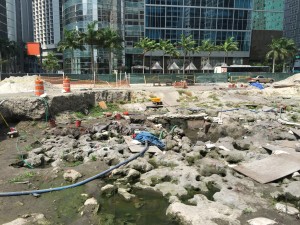 You will also find examples of his more recent work from our region’s rich history along the shores of Biscayne Bay where he and his team have found the largest Tequesta Indian cemetery ever discovered, a site that dates to perhaps 700 B.C. in a location that over time evolved into early downtown Miami where Henry Flagler’s Royal Palm Hotel was built. It is also here, a site that looks a bit like what I imagine the moon might look like, with tall mounds of deep, dark, black dirt and muck but also along with ponds of water scattered all around, that we find important evidence of Miami’s history of rising water.
You will also find examples of his more recent work from our region’s rich history along the shores of Biscayne Bay where he and his team have found the largest Tequesta Indian cemetery ever discovered, a site that dates to perhaps 700 B.C. in a location that over time evolved into early downtown Miami where Henry Flagler’s Royal Palm Hotel was built. It is also here, a site that looks a bit like what I imagine the moon might look like, with tall mounds of deep, dark, black dirt and muck but also along with ponds of water scattered all around, that we find important evidence of Miami’s history of rising water.
There are also unusual piles of debris that sit in the shadows of the glimmering high-rise skyscrapers that surround the construction site of an enormous project known as the Metropolitan Miami’s Met Square. Soon the site will house a steel and glass story tower of more than 40 stories with a large movie theater, restaurants and nearly 400 apartments overlooking the sparkling waters of the Atlantic but, today, it is a fascinating archeological site that holds many important answers about the risks that we face in our future from sea level rise.
As I first sat down with Mr. Carr to interview him for my sea level rise book, Sink or Swim, he eagerly handed me a rock and asked my brother Owen and I if we could identify what it was and where it was found. We immediately knew that it was an arrowhead, and likely a very old one, but did not have any idea where he’d found it or how old it was much less who had made this impressive weapon. He then explained he’d found it buried on the bank of a river along Florida’s West coast, made perhaps 2,000 years ago by Indians in that area and, in doing so, he set the stage for one of the most fascinating, educational and exciting days of my young life.
Mr. Carr’s family moved to Miami from Maryland when he was five. As a teenager he fell in love with archeology and would often visit sites at the mouth of the Miami River and later joined the Museum of Science’s Archaeology Club before earning his undergraduate and Master’s degrees in anthropology from Florida State University. During my time with Mr. Carr we talked about his work as the archeologist at the Met Square development and he explained that before a construction project of this size and type can break ground in Miami Dade, that a developer is required by law to have an archaeological assessment performed on part of the proposed development so as to establish its history.
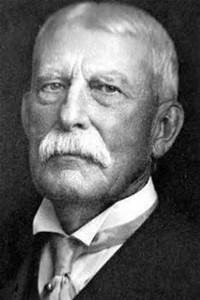 And that brings me to Henry Flagler, coconut palm trees and a brick patio that was part of a resort hotel that he built in 1857 and which, today, provides evidence of sea level rise. Flagler is, of course, an iconic figure in the history of South Florida. By many he’s considered the ‘father’ of Miami. He’s well known for founding The Standard Oil Company, as well as for developing the Florida East Coast Railway, a railroad system that he built that ran from Jacksonville to Miami and eventually on to Key West. Even if you did not know those things, chances are that you’ve heard of Flagler Street here in Miami, or driven on it at one time or another.
And that brings me to Henry Flagler, coconut palm trees and a brick patio that was part of a resort hotel that he built in 1857 and which, today, provides evidence of sea level rise. Flagler is, of course, an iconic figure in the history of South Florida. By many he’s considered the ‘father’ of Miami. He’s well known for founding The Standard Oil Company, as well as for developing the Florida East Coast Railway, a railroad system that he built that ran from Jacksonville to Miami and eventually on to Key West. Even if you did not know those things, chances are that you’ve heard of Flagler Street here in Miami, or driven on it at one time or another.
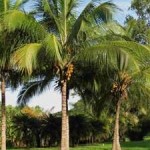 Along the way to creating his legend, Flagler also fashioned the Royal Palm Hotel in downtown Miami, on the edge of Biscayne Bay at the mouth of the Miami River. In its day, the Royal Palm was as swanky a resort destination hotel as could be found just about anywhere, what with its 350 different guest rooms, 100 for servants available to cater to its guests, along with a 578 foot long veranda, lavish gardens and even an outdoor pool, a rare extravagance in the 1800’s.
Along the way to creating his legend, Flagler also fashioned the Royal Palm Hotel in downtown Miami, on the edge of Biscayne Bay at the mouth of the Miami River. In its day, the Royal Palm was as swanky a resort destination hotel as could be found just about anywhere, what with its 350 different guest rooms, 100 for servants available to cater to its guests, along with a 578 foot long veranda, lavish gardens and even an outdoor pool, a rare extravagance in the 1800’s.
The grounds and gardens of the hotel were covered with majestic coconut palm trees which created a seductive tropical visual that its visitors would have expected from such an oasis by the Bay’s edge and, while I had assumed they were native to South Florida, the truth is that they were brought here by Flagler for his new resort. Little did those tourists know that, up until the time that Flagler had his trees imported from their native Dominican Republic, they were nowhere to be found here in Florida. And what did Flagler do with those trees upon their arrival here in Miami? He had them planted, of course, in the ground, in the dirt, where they stood and grew tall watching over downtown Miami and the Bay for decades.
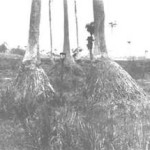 When Bob Carr excavated that same site some 158 years later those coconut palm trees, like the hotel itself, had long ago died and been cut down. But what he found as his team dug below the surface, and what I myself saw on my own visit to the site, were many of the tree’s root balls are still there, underground, or as the case now is, under water. Large and dark and gangly like some prehistoric nest but, rather than sitting in the old dirt that they were planted in long ago they sat, instead, under water.
When Bob Carr excavated that same site some 158 years later those coconut palm trees, like the hotel itself, had long ago died and been cut down. But what he found as his team dug below the surface, and what I myself saw on my own visit to the site, were many of the tree’s root balls are still there, underground, or as the case now is, under water. Large and dark and gangly like some prehistoric nest but, rather than sitting in the old dirt that they were planted in long ago they sat, instead, under water.
Of course, that’s not how or where they were planted. The location is, of course, the same but the water that now covers those massive, old root balls has risen up, higher and higher, over time and it is Mr. Carr’s belief that these now submerged coconut palm root balls provide rather compelling evidence of rapidly rising seas here in Miami over the last 15 or so decades. We can certainly agree that those trees were not initially planted in the salt water and, thus, it’s plausible that the water has, over time, risen.
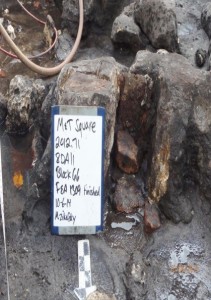 We can also most certainly agree that a man as successful as Henry Flagler would have built his grand hotel above the water level. Of course he would and for that reason Bob Carr was astonished to find a large, beautiful brick patio that was once part of the hotel also submerged under water. I would imagine that that waterfront hotel must have hosted many galas and important events in its hey-day but, today, those bricks are submerged under water. As with the coconut palm tree’s root balls, it’s only logical to conclude that over time, decade by decade, that patio was overtaken by our rising ocean until it, too, was fully submerged.
We can also most certainly agree that a man as successful as Henry Flagler would have built his grand hotel above the water level. Of course he would and for that reason Bob Carr was astonished to find a large, beautiful brick patio that was once part of the hotel also submerged under water. I would imagine that that waterfront hotel must have hosted many galas and important events in its hey-day but, today, those bricks are submerged under water. As with the coconut palm tree’s root balls, it’s only logical to conclude that over time, decade by decade, that patio was overtaken by our rising ocean until it, too, was fully submerged.
After my visit to Mr. Carr’s office, I drove downtown to the Met Square site to see the artifacts and evidence for myself. Once at the dig site one of the archeologist showed me around and let me see examples of the different artifacts that they had discovered during their excavation work. It was an inspiring and humbling experience to see and touch history, some of it from the hotel over 150 years ago and some of it from the sacred ground that the Tequestas once ruled and later buried their dead in perhaps two thousand or more years ago.
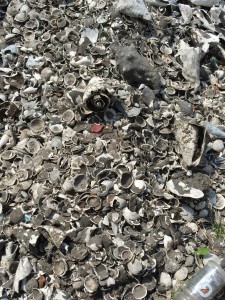 The artifacts included tools made out of bone, conch shells whose inhabitants would have been used for food and whose shells were often made into tools or weapons, pottery from the hotel and the Indians as well as, of course, the submerged coconut root balls and bricks. It was truly amazing to see hundreds of years of history up close but also sobering to visualize the effects sea level rise has already had on us first hand. It’s indisputable that these things were not initially, of course, underwater but that the seas have risen over time.
The artifacts included tools made out of bone, conch shells whose inhabitants would have been used for food and whose shells were often made into tools or weapons, pottery from the hotel and the Indians as well as, of course, the submerged coconut root balls and bricks. It was truly amazing to see hundreds of years of history up close but also sobering to visualize the effects sea level rise has already had on us first hand. It’s indisputable that these things were not initially, of course, underwater but that the seas have risen over time.
Although the developer has agreed to create a small museum including a glass floor so as to display some of what Mr. Carr and his team found, soon, sadly, virtually all of this remarkable history will be covered by the luxury high rise, concrete, glass, steel and asphalt. Before we know it, those mounds of dirt, rock, shell and brick will drift deeper into history and it’s likely that by most folks it will be forgotten.
And what did my day with Mr. Carr and his team teach me?
Well, unless you care to conclude that South Florida has been sinking into the ocean like a mythical Atlantis (which I do not believe is the case), then these under water artifacts, especially the submerged root balls and brick patios, are vivid clues as well as common sense evidence, that suggest to me that sea level rise has, in fact, already begun. Of further concern is Mr. Carr’s view that, based on their location and depth, it would appear that the ocean has risen even faster than scientist had previously thought was the case in our region. And that leads me to think that we need to begin crafting real solutions in our society before it’s too late.
And speaking of common sense, the sooner that we can apply it along with logic and the expertise of leading sea rise scientists then the sooner we can (and should) begin to address the very real risks that our community faces. We can’t wait another 150 years to dig up what will surely be a fully submerged Miami. The time for action is today and what I think Mr. Carr and his team have found is a message to all of us from one of Miami’s own founding fathers. Not in a bottle washed up on our shore but in the form of those bricks and root balls. What I learned is that Henry Flagler is again leading the way around these parts by showing us that we have a problem that needs our attention before it’s too late.
